Identifying corduroy is straightforward when you know its key features. Look for the unique vertical ridges, called wales, which vary in width. You'll find wide wale, standard wale, and even fine pinwale options. Run your fingers across the fabric; the ribbed texture should feel plush and soft. Corduroy is typically made from cotton with possible blends of polyester or wool. Check for the thickness, as heavier corduroy offers warmth and durability. You'll be equipped to recognize this versatile fabric in no time, and there's even more to uncover about its types and care methods.
Understanding Corduroy Characteristics
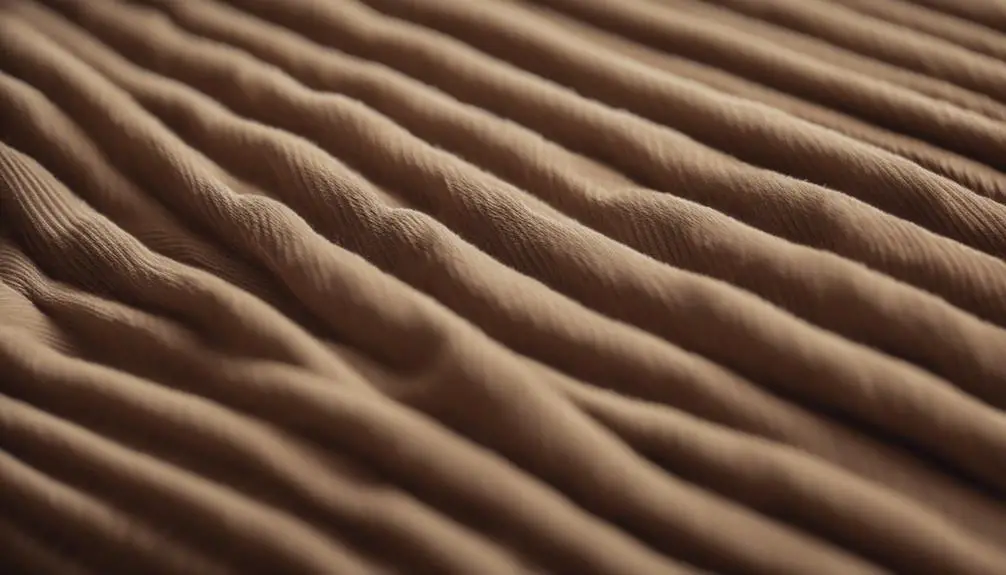
Corduroy features unique characteristics that make it easily identifiable. This corduroy fabric is known for its distinct vertical ridges, or wales, which can vary in width. Typically, you'll find standard wale counts ranging from 8 to 13 wales per inch in regular corduroy. The texture of the fabric comes from a special weaving process that involves three yarns, with two forming a plain or twill weave while the third creates the raised pile.
When you touch corduroy, you'll notice its soft, ribbed surface, giving it a plush feel that appeals to many for both casual and formal wear. The fabric is available in various weights; wider wales usually mean a heavier fabric, while finer wales, like in pinwale corduroy with up to 22 wales per inch, feel lighter. This versatility makes corduroy a popular choice for diverse clothing styles and home textiles. Often dubbed "poor man's velvet," it offers a similar appearance without sacrificing durability. Whether you're looking for comfort or style, understanding these characteristics will help you identify the types of corduroy that best suit your needs.
Identifying Wale Variations
When you're examining corduroy, one of the first things to notice is the wale variations, which are defined by the number of vertical ribs per inch. Understanding these variations helps you choose the right fabric for your needs. Here's a quick breakdown of the main types:
- Wide Wale: Featuring 3-6 wales per inch, this corduroy has larger ribs, giving it a robust and casual appearance.
- Standard Wale: Typically has 8-13 wales per inch, providing a balanced texture that's versatile for various garments.
- Needlecord: With 14-18 wales per inch, needlecord offers a lighter weight option, perfect for those looking for a softer touch.
Another notable type is elephant cord, characterized by its exceptionally wide wales, usually between 1.5 and 6 wales per inch. This makes it the heaviest-duty option available. Remember, the wale count directly affects the fabric's texture and thickness. Lower wale numbers create a thicker, more pronounced ribbed texture, while higher counts result in a finer, smoother surface. By identifying these wale variations, you can make more informed choices in your corduroy selections.
Recognizing Fabric Composition
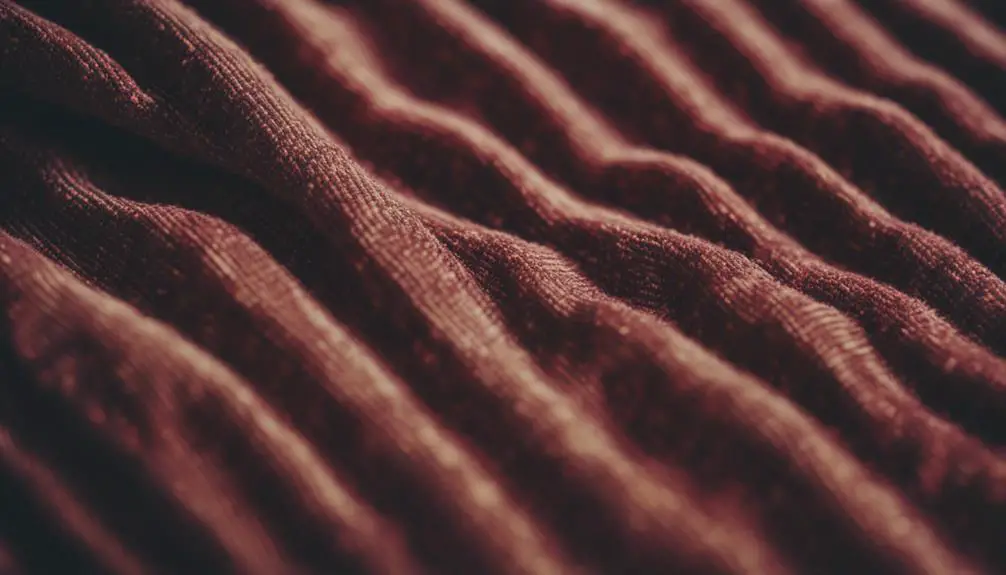
Understanding fabric composition is essential for selecting the right corduroy for your needs. Corduroy is primarily made from cotton, but blends with polyester, rayon, wool, or spandex can notably impact the fabric's texture and stretch. The distinctive ribbed texture, known as wales, is formed by three yarns: two for the flat canvas and one for the pile.
To help you identify key features of corduroy, consider the following table:
| Feature | Description |
|---|---|
| Wales per inch | Standard: 8-14; Pinwale: up to 22 |
| Weight of fabric | Thicker for durability and warmth |
| Different types | Varieties include classic, pinwale, and wide wale |
The weight of the fabric gives clues to its durability, making it suitable for outerwear and heavy-duty clothing. Additionally, corduroy's ability to absorb dyes allows for various colors and patterns. By examining the fabric's surface, you can gauge its sheen and depth, which indicate quality and composition. Understanding these elements will help you choose the right cord fabric for your wardrobe.
Exploring Corduroy Types
The diverse world of corduroy types offers something for everyone, whether you're looking for lightweight fashion or heavy-duty outerwear. Understanding the different types can help you make the right choice for your wardrobe. Here's a quick overview of some key corduroy types based on wale numbers:
- Pinwale Corduroy: This type has the highest wale count, featuring up to 22 wales per inch. It's lightweight and versatile, perfect for shirts and dresses.
- Standard Corduroy: With 8-13 wales per inch, standard corduroy strikes a balance between durability and texture. It's commonly used in trousers and jackets, making it a reliable choice for everyday wear.
- Elephant Cord: Characterized by its wide wales, which can be as low as 1.5, elephant cord is the most substantial type. It's often used for heavy garments and outerwear, providing warmth and sturdiness.
Additionally, you might consider Stretch Corduroy, which incorporates spandex for flexibility, making it ideal for active wear and children's clothing. Exploring these types will help you find the perfect corduroy for your needs!
Evaluating Texture and Feel
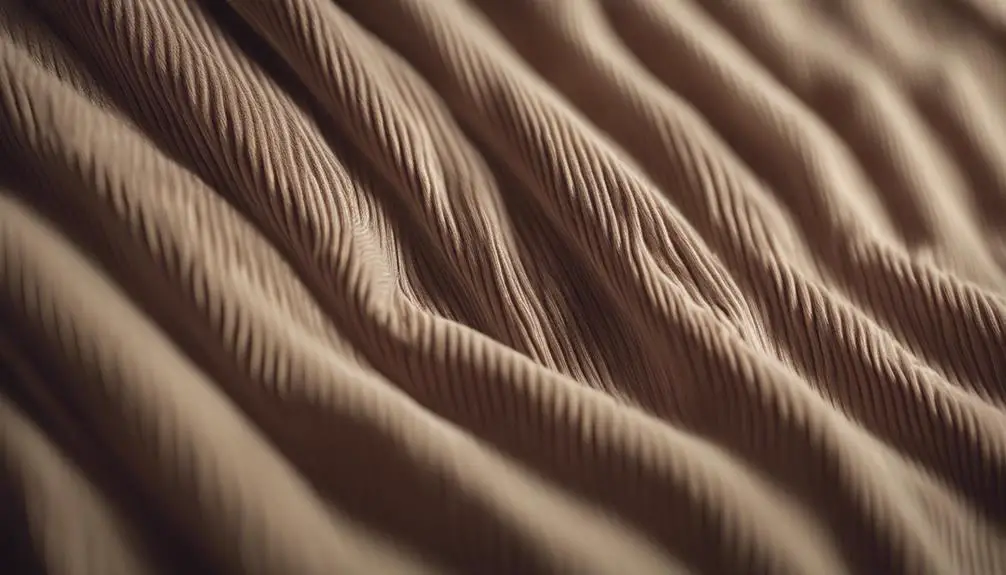
Feel the difference as you evaluate corduroy's unique texture and feel. Corduroy is characterized by its ribbed texture, known as wales, which can vary greatly. When you touch the fabric, you'll notice a number of wales ranging from fine pinwale, with up to 22 wales per inch, to wide wale, having as few as 1.5 wales per inch. The surface features evenly spaced vertical rows of soft pile that provide a distinct tactile sensation.
To assess the texture, run your fingers across the fabric. The pronounced ridges will be evident, with higher wale counts resulting in a smoother surface. Also, keep in mind the weight of the corduroy. Heavier corduroy typically has thicker wales, giving it a more substantial feel. In contrast, lighter weight fabrics, like feathercord or pincord, offer a softer drape and a gentler touch.
Gently squeeze the fabric to determine its thickness and plushness. More substantial corduroy fabrics will exhibit a denser feel, while lighter options will feel softer. This hands-on evaluation is crucial to guarantee you choose the right corduroy for your needs.
Assessing Durability and Warmth
When choosing corduroy, it's important to reflect on its durability and warmth alongside its texture. Corduroy is renowned for its unique weaving technique, which creates strong wales that make it resistant to wear and tear. This durability guarantees your corduroy garments will last through many seasons.
Additionally, the ribbed texture of the fabric contributes to its warmth. The raised wales create air pockets that act as insulation against colder temperatures. Here are three key factors to think about when evaluating corduroy:
- Wale Number: Higher wale counts, like pinwale corduroy, provide a lighter fabric while still retaining warmth, making them ideal for layering.
- Type of Fabric: Standard corduroy typically weighs between 7 to 10 ounces per yard, offering substantial warmth without being overly heavy.
- Composition: Often made from 100% cotton or blends with wool, corduroy enhances its thermal properties, making it suitable for winter wear.
When you examine these aspects, you'll be well-equipped to choose the right Manchester cloth for your needs, guaranteeing you stay warm and stylish.
Caring for Corduroy Fabric

Caring for corduroy fabric requires attention to detail to keep it looking its best. When you wash corduroy, turn it inside out and use cold water to prevent shrinking and protect its distinctive wales. Be certain to avoid washing it with lint-producing materials to maintain its clean appearance.
After washing, air drying is your best option. This helps maintain the fabric's shape and texture while preventing any unwanted creases. If you need to iron your corduroy, always use a low heat setting and a pressing cloth to avoid damaging the fabric and creating unwanted shine.
To keep your corduroy looking fresh, regularly remove lint using a lint roller or clothes brush, working gently with the grain of the fabric. This guarantees you maintain its appearance without harming the wales.
Frequently Asked Questions
How Can You Tell if Something Is Corduroy?
You can tell if something's corduroy by feeling its soft, plush texture and observing the distinct vertical ridges. Check for the ribbed surface and a heavier weight compared to typical cotton fabrics.
What Are the Characteristics of Corduroy?
Corduroy's characteristics include its soft texture, distinct vertical ridges called wales, and versatility in colors and patterns. You'll love its warmth and affordability, often making it a stylish alternative to more expensive fabrics.
What Is the Appearance of Corduroy?
Corduroy's appearance features distinct vertical ridges, known as wales, creating a textured surface. You'll notice its soft, plush feel and slight sheen, making it visually appealing in various colors and patterns, resembling luxurious velvet.
Are There Different Types of Corduroy?
Yes, there are different types of corduroy. You've got pinwale for finer textures, wide wale for a casual look, and stretch corduroy for flexibility. Each type suits various styles and needs in your wardrobe.
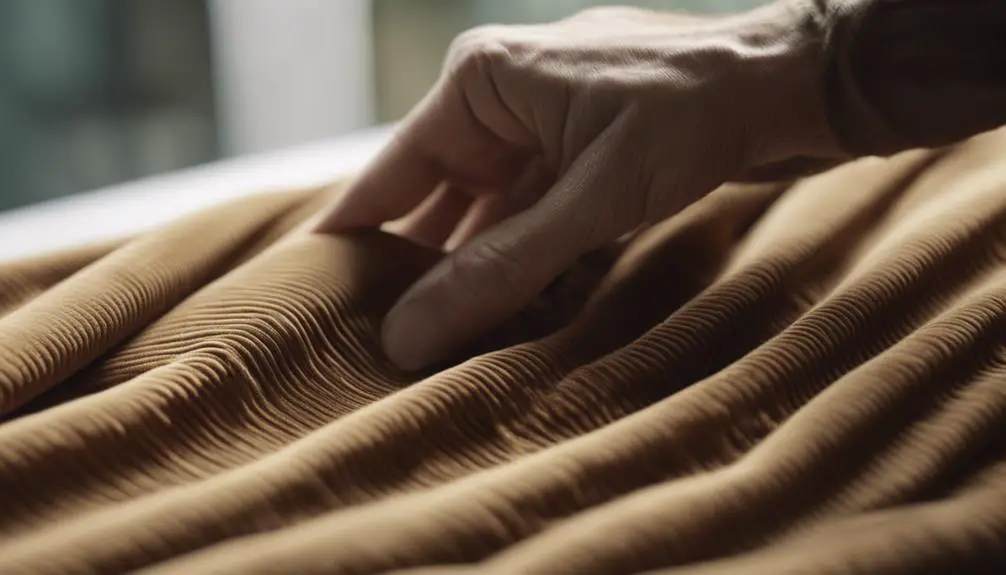


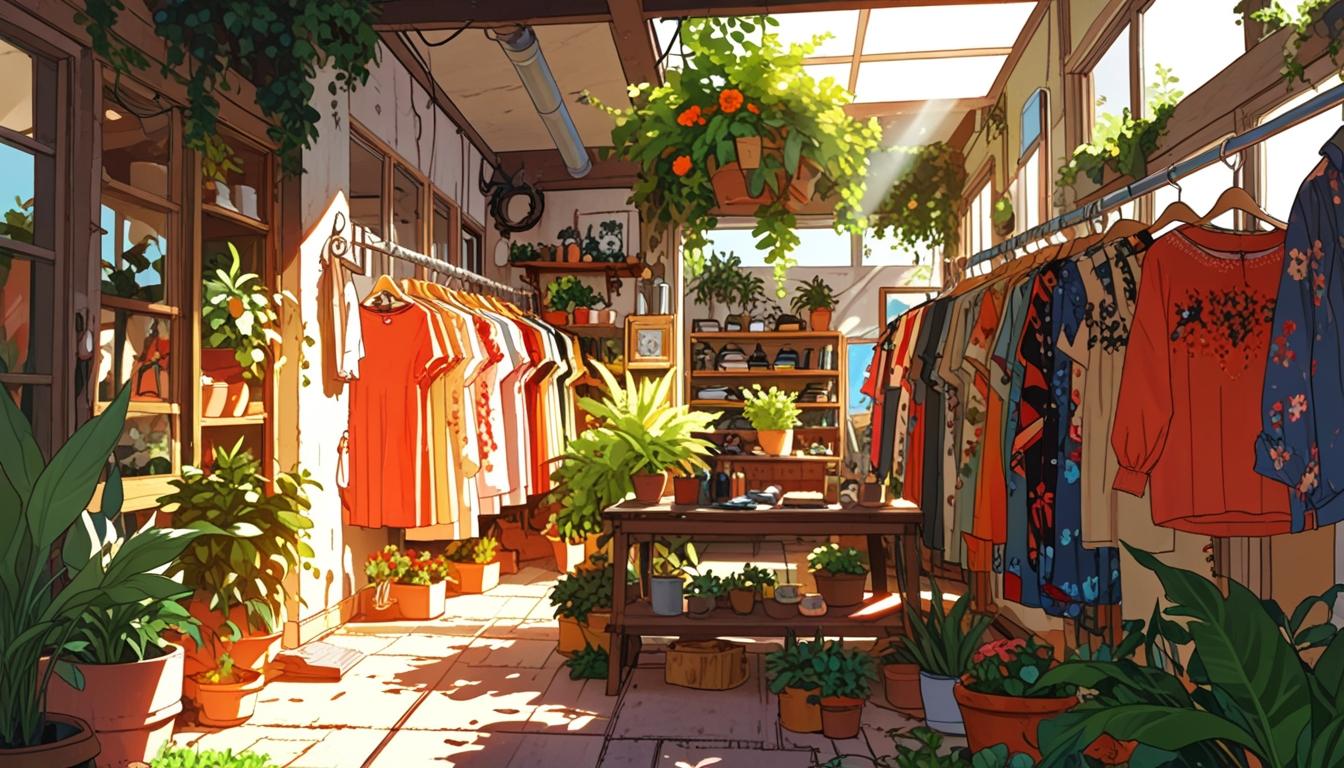
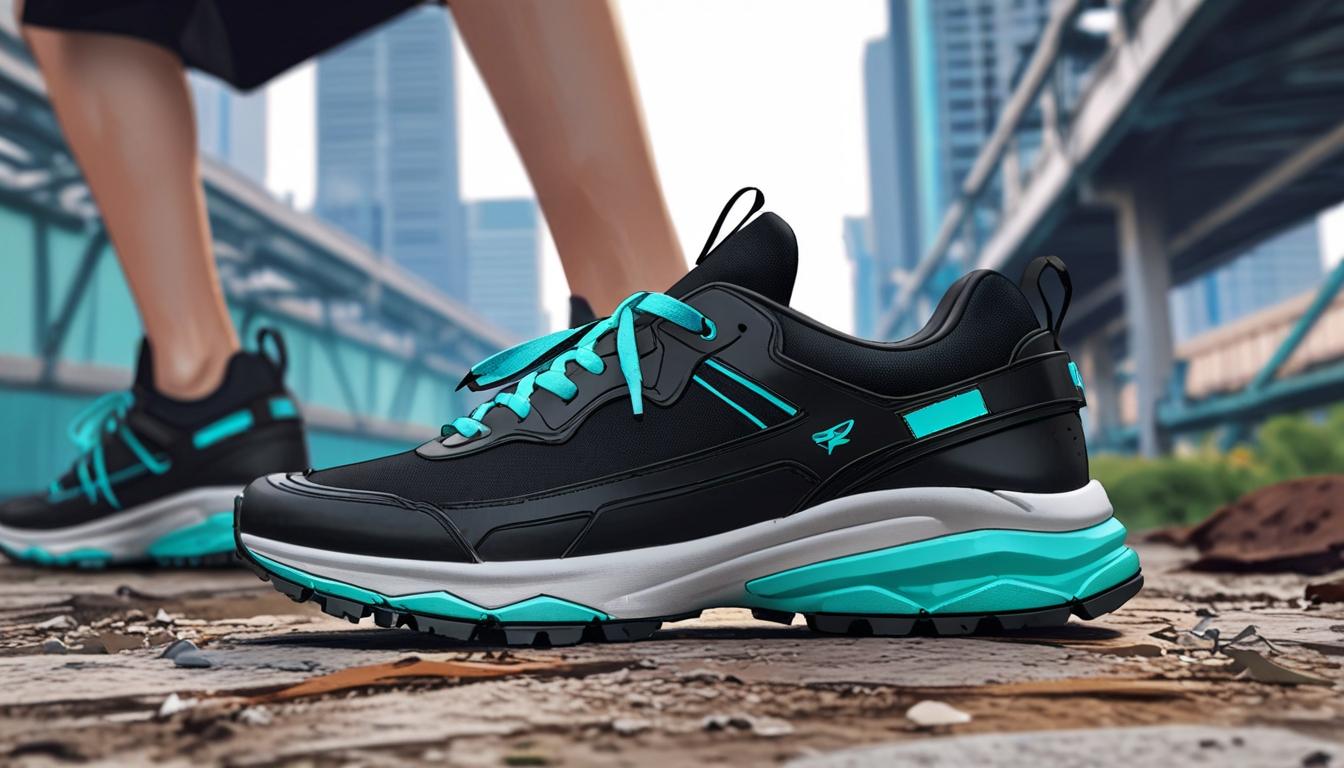
some genuinely rattling work on behalf of the owner of this website , perfectly great articles.